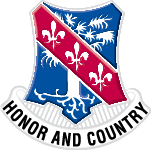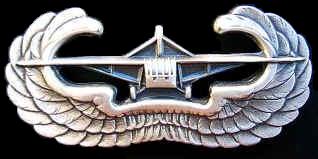|
|
. 327TH GIR . GLIDER Infantry Regiment |
|
![]() Roster
Roster
The 327th Infantry Regiment was the first unit to be attached to the 82nd Division on September 17th, 1917 at Fort Gordon in Georgia.
After its formation, it was hastily sent to France in 1918.
After the summer, it was sent to the front and become as such the first American unit to go into operations during the First World War and participated at the St. Mihiel offensive.
The regiment then hold a line of defence in the Lorraine
Region.
After this, they take part in the major final offensive of November 1918 in the
Meuse-Argonne sector. During this offensive, its 3rd battalion
has the honour of being the first to attend and push through the Kriemhilde
Position, the last German line of defence before entering Germany.
The 327th at the end of the war, is demobilized on May 26th, 1919 at Camp Upton in New York and later reinstalled as reserve troops at Greenville in South Caroline.
It will stay like this until the beginning of WW2.
With the 82nd Infantry Division reactivated in March 1942, the 327th GIR follows the same road towards the Camp Claiborne in Louisiana in the summer of 1942.
The creation of a airborne division takes place and the 82nd becomes the first airborne division.
Later, the 101st is created. The 327th GIR is attached to the 101st as a airborne regiment but transported with gliders.
Most of the men have never put a foot inside an airplane and even less in a glider, but all knew that when the war started, they had to fight for their country.
August 15th, 1942 the 327th GIR becomes a regiment that is transported with gliders and attached to the newly created 101st Airborne Division.
The regiment was composed of two battalions, later a third one coming from the 401st GIR that will join up. The 327th GIR is commanded by Colonel George S. Wear.
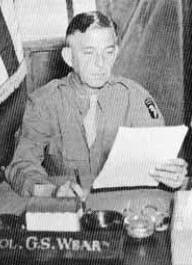 <-Colonel George S. Wear
<-Colonel George S. Wear
Fall 1942, the regiment is sent to Fort Bragg in North Carolina to commence its training on the gliders, called CG-4a. During this, some conflicts emerge between the paratroopers of the 502nd PIR and the men of the 327th GIR. The paratroopers consider themselves as elite troops and the only true airborne soldiers.
At the Laurinburg-Maxton airfield the men take their training in flying the gliders. The first flights are terrible and a lot of men are airsick and vomit in their helmets, as little bags were not available yet.
As their training continues, it becomes clear that landing with a glider is much more dangerous then those who use a parachute and which can break a leg or an arm at the most.
The glider can land onto a tree, a hay, a fence. Its nose can ditch into the ground and turn over the aircraft, thus injuring or even killing all those aboard.
It is interesting to know that the soldiers of the glider regiments are not volunteers, as are the airborne soldiers, but men that were already in the unit when they became part of the airborne division.
Spring 1942, the 327th GIR participates at the manoeuvres with the 101st, that take place from March 23rd until 28th at Camden and in Tennessee.
In August 1943, the 327th GIR embarks on the SS Samaria direction Liverpool in England. They arrive on September 15th, 1943 and sent to Camp Ranikhet near Reading. The regiment will train with the Horsa glider which is over 1/3 bigger than the Waco and which holds more soldiers.
During winter time, codes and emblems are given to the different units of the 101st. The 327th GIR receives as an emblem the trifle.
It will participate at two exercises during the winter. Beginning of 1944, it participates in three major exercises, called “BEAVER” from 27th until 31st March 1944. Followed by “TIGER” where the 327th soldiers train as infantrymen. Last, “EAGLE”, from 9th until 11th May 1944 and which is a major rehearsal for the landing.
![]() D-DAY – June 44 – Normandy – France – Operation Neptune
D-DAY – June 44 – Normandy – France – Operation Neptune
June 1944, the decision is made to drop the 101st and 82nd into Normandy and thus reduces the number of available planes for towing the gliders.
The 327th GIR is not dropped over Normandy, but will disembark at Utah Beach with the 4th Infantry Division on D-Day. 3rd Battalion will disembark on D-Day, in the afternoon and will take a bivouac area on the beach. During the evening, D-Day + 1, the 1st and 2nd Battalion are concentrated near Ste Marie du Mont. On June 8th, 3rd Battalion fights near St Côme du Mont. At 8 PM, units of the 327th GIR advance until the lock of the Barquette and relief the 506th PIR. From there, they patrol along the Douve River.
June 9th, the 327th GIR moves towards Carentan. At 1.45 AM, C Coy crosses the Douve River. At 7 AM, the village of Brevands is passed and a two day fight starts to the South towards Carentan. June 10th, at 22 PM, 327th GIR attacks near the Vire – Taute canal and 2nd Battalion takes position near a footbridge connecting the canal with the Douve River.
On June 10th, commanding officer of the 327th GIR becomes Colonel Joseph H. Harper.
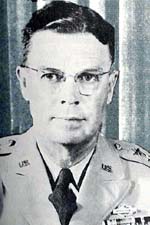 <-Colonel
Joseph H. Harper
<-Colonel
Joseph H. Harper
June 11th, the 327th passes the bridge and advances into a forest, but are stopped by heavy enemy fire. At dawn of the 12th, at 5 AM, 3rd Battalion attacks at Basin-a-Flot to the Northeast. They receive sniper fire and are bothered by a fire at the far east side of the village, which is a tar pool burning.
At 7 AM, the company is inside the village. Later, they will try to take the hamlet of Montmartin-en-Graignes, situated around 8 Km of Carentan, where the 327th encounters heavy resistance, consisting out of automatic fire, mortar rounds and 88mm guns. The 327th joins up with elements of the 29th Infantry Division and takes defensive positions around the hamlet.
June 13th, the 327th is sent along the railroad track that they hold until the 14th. On June 15th, it is send towards Carentan. The day after, the 327th between the 501st and 502nd PIR. June 17th, the last real assault of the 327th starts, with limited objectives. They only have to support the assault by the airborne regiments.
July 13th, 1944 the 101st is sent back to Southampton, England. During the summer, several attacks are planned, but every time cancelled.
One of this operations was “Operation TRANSFIGURE”. The 327th was to be send near a zone, not far from the village of Chatonville in France on the 19th August. But the swift advance by Patton cancels the operations, as he takes the zone on the 17th. Another operation was to aim for Tournai in Belgium, called “Operation LIMET I”. But the British 2nd Division will liberate the town.
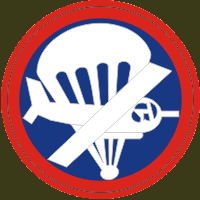
Holland – september 1944 – operation Market-Garden
The following operation where the regiment participates is « Market Garden », the invasion of Holland.
It is a daring plan, prepared by the British Field Marshal Montgomery and will be the first airborne operation during daytime after the landings of the Germans in Crete. This time the 327th GIR arrives with gliders.
The 327th GIR will be there for 73 days, of which 48 at the front without moving.
After this, they withdrawn to France for the next mission.
![]() Belgium
– december 1944 –
Belgium
– december 1944 –
In the morning of the 16th December 1944, a major offensive is launched by the German army, passing through the Belgian Ardennes, where the VII Corps assures the defence.
Their objective is to take the city of Antwerp, thus being the only harbour supporting the allied troops.
At this point, the 101st as well as the 82nd are re-organising in France and kept as reserve.
December 18th, 1944 the 101st is sent to the town of Bastogne, strategic town for the Germans due to a number of major roads that they need for their offensive.
The 101st is transported by
trucks on the night of the 18th December
From December 19th until December 22nd, elements of the German 5th and 7th Panzer encircle the complete town. The 327th GIR ensures the defence of the Southern Sector around the villages of Marvie and Flamierge. After digging their foxholes, the soldiers are attacked by several waves of tanks.
It is in this sector that the Germans will send a negotiator to ask for the surrender of the town on December 23rd.
The
Even encircled and outmanned, the Americans resist all German attacks, even from soldiers who are disguised as GI’s. The 327th GIR resists for nine days, until the 4th Division of Patton’s Third Army break through the encirclement.
Despite heavy losses, the regiment takes 750 prisoners, destroys 144 tanks and 105 different vehicles.
For its heroic actions, the 327th GIR receives the regimental creed of « Bastogne Bulldog » and receives the first Presidential Unit Citation.
 The End – 1945
The End – 1945
The 327th GIR and the 101st are sent to the Alsace-Lorraine Region to face operation « Nordwind » launched by the Germans. In the North-eastern part of France, during February 1945, several smaller operations take place.
After this, the division is sent to Germany where it fights in the industrial region of the Ruhr. It will also liberate a forced labour and concentration camp.
The 327th also participates at taking several Bavarian towns and villages, especially Berchtesgaden where so many houses of high-ranking Nazis are found as well as the “Eagle Nest”, the famous house where Hitler lived.
On May 8th, 1945, V-E Day, the 101st becomes a occupation force. They receive orders to prepare for combat in the Pacific. But two atomic bombs speed up the end of the war.
At the end of the war, the 327th GIR is dissolved on November 30th, 1945.
2 Presidential Distinguished
Unit Citations for operations in Normandie and
War Cross with
palms for the
2 War Cross and Lanyard for the Bastogne operations
Lanyard Oranje from the Netherlands for the operation Market Garden
